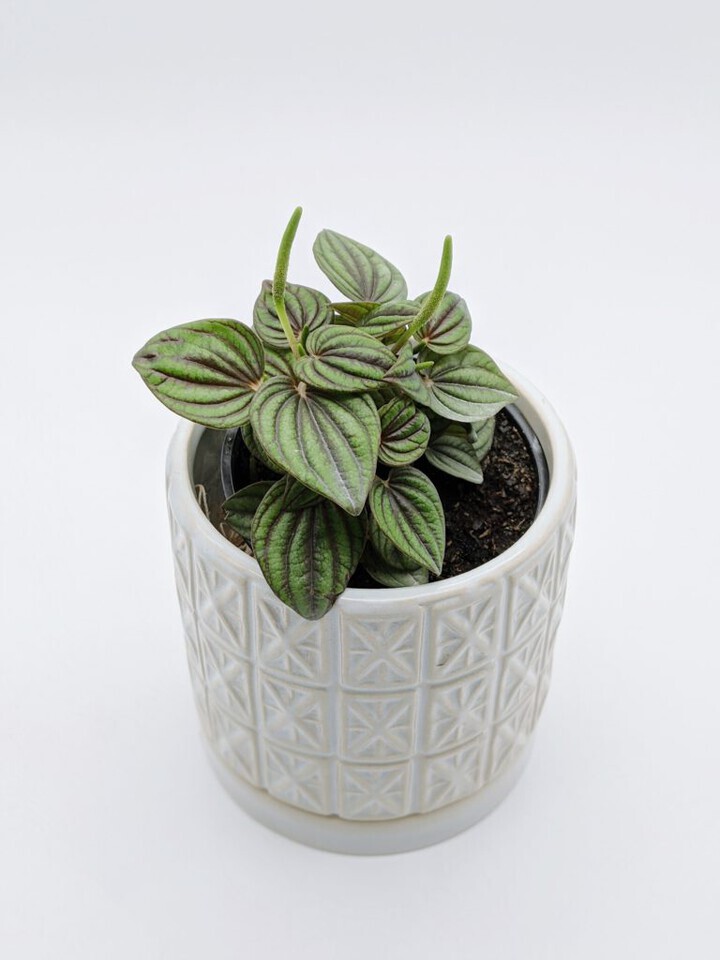All Peperomia make for an interesting and showy houseplant, and as a result are a very popular plant family with Plant Parents. Peacock Peperomia, or Peperomia Piccolo Banda, is no exception! Because Peacock Peperomia is a “semi succulent,” its care is fairly simple, making this a great plant for beginner Plant Parents.
A member of the Piperaceae family (that’s right – peperomia is a member of the pepper family!), Peacock Peperomia’s foliage is its claim to fame. The main color of Peacock Peperomia’s foliage is dark plum, and it has a very faint streak running through the center, topped off with a sort of pearlescent sheen. On top of its coloring, the leaves tend to ruffle just a bit, as well. With fancy foliage like this, it’s no wonder that Peperomia Piccolo Banda is known as “Peacock” peperomia! Peacock Peperomia will not flower indoors, but this beautiful plant doesn’t even need flowers in order to attract attention.

As with many Peperomia, you can expect a compact and bushing growth habit. Peacock Peperomia can grow to be around two feet tall and twelve inches across. Its foliage grows along a central stem and bushes out from there. Peacock Peperomia is pet friendly, and is said to be air-cleaning as well. Plant Peacock Peperomia in any well-draining soil, and place it in a spot where it will get medium to bright indirect light. Because Peacock Peperomia does not have any specific humidity requirements, and due its pet friendly nature and forgiving light requirements, Peacock Peperomia can be placed in many areas in which other more tropical houseplants would not do well. In fact, Peacock Peperomia is even able to tolerate low light, though it will not flourish quite as much as it would with medium to bright indirect light.
Water Peacock Peperomia after the soil has almost completely dried out. Use the “Drench and Drain” method of watering (allow the water to run over the soil for a few minutes, and then allow the water to completely drain out of the bottom of the pot before replacing the plant). If your pot doesn’t have good drainage, we recommend a Moisture Meter to help you determine moisture levels both before and while watering. Keep in mind also that the more light a plant gets, the more water it will need.